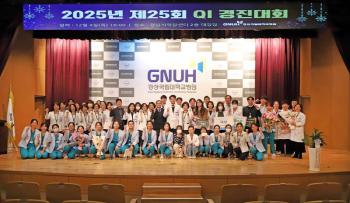Using patient big data and AI, improving the performance of oriental medicine treatment...Self-sustaining Oriental Medicine Hospital Announces Analysis of Treatment Prediction
|
Lee Ye-seul's research team at Jaseng Oriental Hospital's Spinal Joint Research Institute (Director Ha In-hyuk) announced on the 15th that it published this research paper in the SCI(E)-level international journal 『International Journal of Medical Informatics』[IF:4.1)"].
EHR is a system that increases medical efficiency and continuity of treatment by digitally storing and sharing the patient's medical, examination, and treatment history. However, despite providing abundant patient data, information on related changes was not accurately recorded when symptoms changed from moment to moment or when symptoms changed differently from patient to patient. As a result, it was often difficult to predict the prognosis for each disease, and in particular, herniated disk, a representative spinal disease, had limitations in predicting the treatment performance of related diseases due to significant differences in symptoms, improvement speed, and prognosis of patients.
Accordingly, Dr. Lee Ye-seul's research team devised a new analysis method based on the EHR of 6,732 patients with lumbar disc who received integrated oriental medical treatment such as acupuncture, herbal acupuncture, and herbal medicine prescriptions at five oriental medicine hospitals from 2017 to 2021.
The research team classified patient groups using the back dysfunction index (ODI, 0-100) and combined the machine learning analysis model with the 「Latent Class Trajectory Model」 that analyzes symptom changes over time. LCTM is a statistical technique that identifies the symptom patterns that patients show over time and identifies and analyzes the patterns of each group. It has the advantage of being able to identify patient groups with different recovery patterns even with the same disease.
As a result of the analysis, the research team confirmed that through the combination of LCTM and machine learning, patients were divided into △'mild dysfunction-quick recovery group' △'mild dysfunction-quick recovery group' △'mild dysfunction-slow recovery group' where initial dysfunction is significantly confirmed, but'm recovered in a short period of time. The accuracy of this patient type classification was very high, over 90%, and when verified by applying the latest year's new EHR data, the treatment performance prediction accuracy (AUROC) improved to 81.5% compared to the existing predictive model figure of 77.7%. It performed better than a model that simply used basic information such as the patient's age, gender, and medical history. In addition, additional major evaluations such as precision and reproducibility also demonstrated improved performance.
Lee Ye-seul, director of the Spinal Joint Research Institute at Jaseng Oriental Hospital, said, "This study is the first case of developing a predictive model through EHR data and advanced analysis techniques in the field of oriental medicine. As it can predict treatment results with high accuracy by reflecting individual symptom changes, it is expected to contribute to the improvement of customized treatment and oriental treatment results in the future."
|
This article was translated by Naver AI translator.





